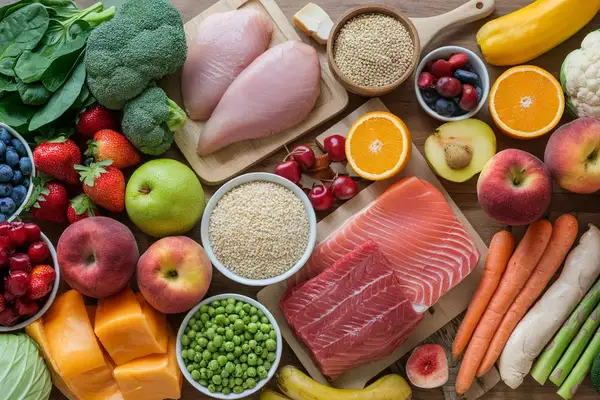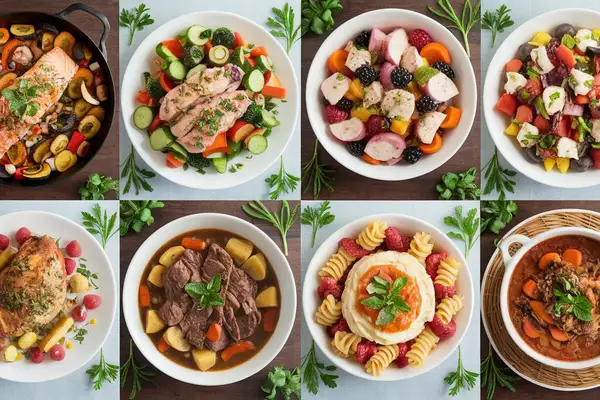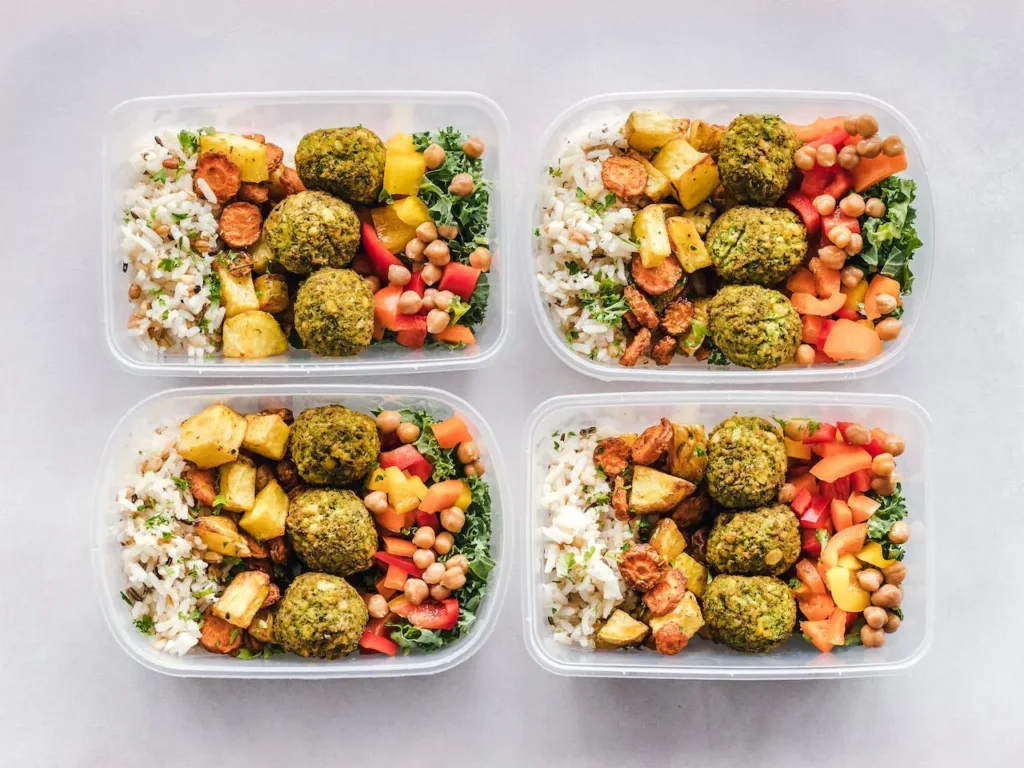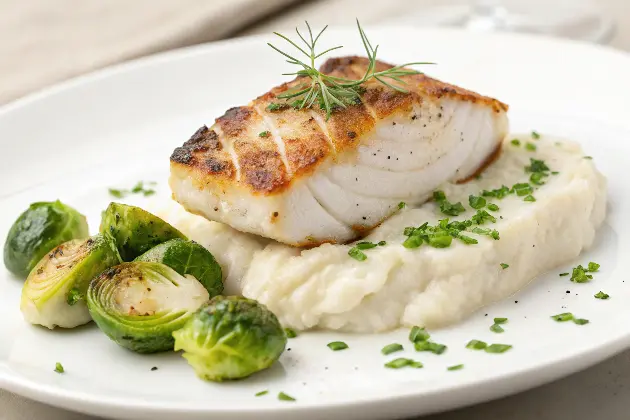7-Day Metabolic Confusion Diet Plan
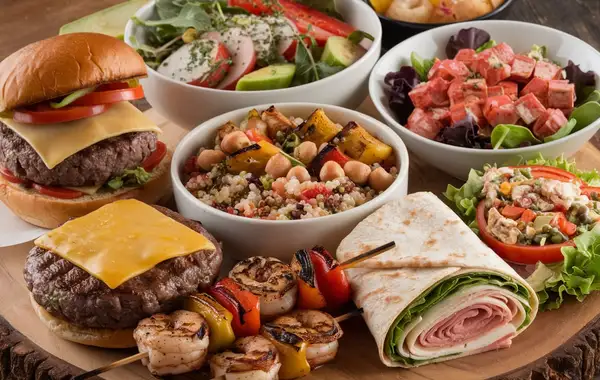
- What is Metabolic Confusion?
- How Does Metabolic Confusion Work?
- 7-Day Metabolic Confusion Diet Plan
- Foods to Eat on a Metabolic Confusion Diet
- Foods to Avoid on a Metabolic Confusion Diet
- Benefits of the Metabolic Confusion Diet
- How to Do Metabolic Confusion
- How Often Should You Do a Metabolic Confusion Diet?
- Conclusion
- FAQs
This post may contain affiliate links, meaning I may earn a commission if you make a purchase, at no extra cost to you. I only recommend products I trust. Thank you for your support.
Are you looking for a fresh approach to weight loss that doesn’t feel like a constant uphill battle?
Well, you’re in luck because we’re about to dive deep into the world of the metabolic confusion diet.
This 7-day metabolic confusion meal plan might just be the game-changer you’ve been searching for.
Unlike other diets that can leave you feeling restricted and tired, the metabolic confusion diet is designed to keep your body guessing and your metabolism working at its best.
So, grab a cup of coffee (which, by the way, might help boost your metabolism – more on that later!), and let’s get started on this exciting journey!
What is Metabolic Confusion?
Alright, let’s start with the basics. The metabolic confusion diet, also known as calorie cycling or calorie shifting, is an eating pattern that alternates between high and low-calorie days.
The idea behind this approach is to keep your metabolism on its toes, preventing it from adapting to a consistently low-calorie intake, which can sometimes slow down your weight loss progress.
Metabolic confusion aims to counteract this effect by varying your calorie intake, encouraging your metabolism to stay active and continue burning calories.
Think of it as a fun little game of hide and seek with your metabolism. One day you’re eating a bit more, the next day a bit less. It’s all about keeping your body guessing.
How Does Metabolic Confusion Work?
Now, you might be wondering, “How does metabolic confusion work?” Great question!
The principle behind metabolic confusion is simple: by fluctuating your daily calorie intake, you prevent your metabolism from adapting to a lower calorie level.
On high-calorie days, your body gets the energy it needs to function optimally, while on low-calorie days, it taps into fat stores for fuel.
When you’re on a long-term calorie-restricted diet, your body might start to think, “Uh-oh, we’re in starvation mode!” and slow down your metabolism to conserve energy.
But with metabolic confusion, you’re giving your body periodic breaks from calorie deprivation. This approach might help prevent those pesky metabolic adaptations that can hinder weight loss.
7-Day Metabolic Confusion Diet Plan
This 7-day metabolic confusion diet includes a carefully crafted balance of high-calorie and low-calorie days designed to keep your metabolism on its toes.
It includes a variety of nutrient-dense foods to ensure that your body receives the essential vitamins and minerals it needs, while also keeping your meals satisfying and enjoyable.
Ready to give it a try? Here’s a sample 7-day metabolic confusion meal plan to get you started.
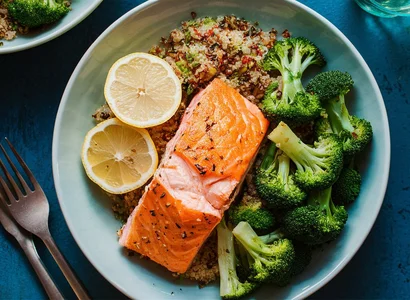
Day 1 (High-Calorie Day – Around 2000 Calories)
Breakfast:
- Whole Grain Toast with Avocado and Poached Eggs: Spread mashed avocado on whole grain toast and top with poached eggs. (2 slices whole grain toast, ½ avocado, 2 poached eggs)
Lunch:
- Grilled Chicken Salad with Mixed Greens and Light Dressing: Toss grilled chicken with mixed greens and a light dressing. (4 oz grilled chicken breast, 2 cups mixed greens, 2 tbsp light dressing)
Dinner:
- Baked Salmon with Quinoa and Roasted Vegetables: Serve baked salmon with a side of quinoa and roasted vegetables. (6 oz salmon fillet, ½ cup cooked quinoa, 1 cup roasted vegetables)
Snacks:
- Greek Yogurt with Berries and a Drizzle of Honey: Serve Greek yogurt topped with fresh berries and a drizzle of honey. (1 cup Greek yogurt, ½ cup mixed berries, 1 tsp honey)
- Apple Slices with Almond Butter: Serve sliced apple with a side of almond butter. (1 medium apple, 2 tbsp almond butter)

Day 2 (Low-Calorie Day – Around 1000 Calories)
Breakfast:
- Oatmeal with a Small Banana and Cinnamon: Prepare oatmeal topped with a sliced banana and a sprinkle of cinnamon. (½ cup oats, 1 small banana, ½ tsp cinnamon)
Lunch:
- Vegetable Soup with a Small Whole Grain Roll: Enjoy a bowl of vegetable soup with a whole grain roll. (1 cup vegetable soup, 1 small whole grain roll)
Dinner:
- Grilled Tofu with Steamed Broccoli and Brown Rice: Serve grilled tofu with steamed broccoli and brown rice. (4 oz tofu, 1 cup steamed broccoli, ½ cup cooked brown rice)
Snacks:
- Carrot Sticks with Hummus: Serve carrot sticks with a side of hummus. (1 cup carrot sticks, 2 tbsp hummus)
- Small Handful of Almonds: Snack on a small handful of almonds. (1 oz almonds)
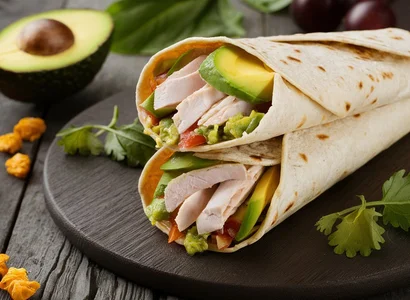
Day 3 (High-Calorie Day – Around 2000 Calories)
Breakfast:
- Spinach and Mushroom Omelet with Whole Grain Toast: Prepare an omelet with spinach and mushrooms, served with whole grain toast. (3 eggs, 1 cup spinach, ½ cup mushrooms, 2 slices whole grain toast)
Lunch:
- Turkey and Avocado Wrap with a Side Salad: Wrap turkey and avocado in a whole grain tortilla and serve with a side salad. (4 oz turkey slices, ½ avocado, 1 whole grain tortilla, 2 cups mixed greens, 2 tbsp vinaigrette)
Dinner:
- Lean Beef Stir-Fry with Mixed Vegetables and Brown Rice: Stir-fry lean beef with mixed vegetables, served with brown rice. (6 oz lean beef, 2 cups mixed vegetables, ½ cup cooked brown rice)
Snacks:
- Protein Smoothie with Banana and Peanut Butter: Blend a smoothie with protein powder, banana, and peanut butter. (1 scoop protein powder, 1 banana, 1 tbsp peanut butter, 1 cup almond milk)
- Mixed Nuts and Dried Fruit: Enjoy a mix of nuts and dried fruit. (¼ cup mixed nuts, ¼ cup dried fruit)
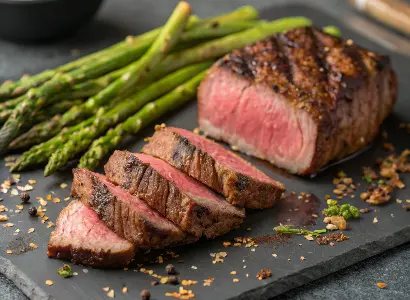
Day 4 (Low-Calorie Day – Around 1000 Calories)
Breakfast:
- Greek Yogurt Parfait with Low-Fat Granola and Berries: Layer Greek yogurt with granola and fresh berries. (1 cup Greek yogurt, ¼ cup low-fat granola, ½ cup mixed berries)
Lunch:
- Tuna Salad on a Bed of Mixed Greens: Serve tuna salad on a bed of mixed greens. (4 oz tuna, 2 cups mixed greens, 2 tbsp light mayo or Greek yogurt)
Dinner:
- Pan-Seared Steak with Asparagus: Serve pan-seared steak with sautéed asparagus and a side of mashed cauliflower. (4 oz steak, 1 cup sautéed asparagus, ½ cup mashed cauliflower)
Snacks:
- Celery Sticks with Low-Fat Cream Cheese: Spread low-fat cream cheese on celery sticks. (1 cup celery sticks, 2 tbsp low-fat cream cheese)
- Small Apple: Enjoy a small apple. (1 small apple)
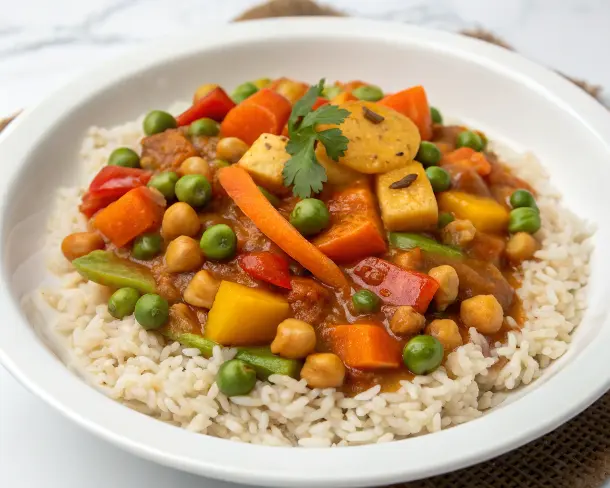
Day 5 (High-Calorie Day – Around 2000 Calories)
Breakfast:
- Whole Grain Pancakes with Fresh Berries and a Drizzle of Maple Syrup: Serve whole grain pancakes topped with fresh berries and a drizzle of maple syrup. (2 pancakes, ½ cup fresh berries, 1 tbsp maple syrup)
Lunch:
- Vegetable Curry with Chickpeas over Brown Rice: Serve hearty vegetable curry with chickpeas over a bed of brown rice. (1 cup vegetable curry with chickpeas, ½ cup cooked brown rice)
Dinner:
- Lentil Soup with a Side of Mixed Greens: Enjoy a bowl of lentil soup with a side of mixed greens. (1 cup lentil soup, 2 cups mixed greens, 2 tbsp vinaigrette)
Snacks:
- Cottage Cheese with Pineapple Chunks: Enjoy cottage cheese topped with pineapple chunks. (1 cup cottage cheese, ½ cup pineapple chunks)
- Trail Mix: Enjoy a mix of nuts, seeds, and dried fruit. (¼ cup trail mix)
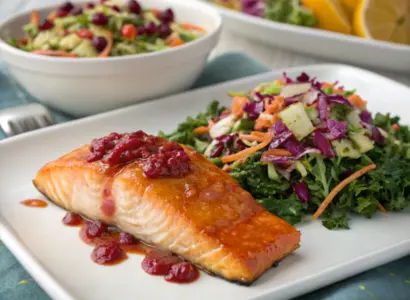
Day 6 (Low-Calorie Day – Around 1000 Calories)
Breakfast:
- Scrambled Egg Whites with Spinach and Tomato: Prepare scrambled egg whites with spinach and tomato. (3 egg whites, 1 cup spinach, ½ cup diced tomato)
Lunch:
- Grilled Shrimp Skewers with Roasted Bell Peppers: Serve grilled shrimp skewers with brown rice and roasted bell peppers. (6 oz shrimp, ½ cup cooked brown rice, 1 cup roasted bell peppers)
Dinner:
- Grilled Salmon with Sautéed Kale: Serve grilled salmon fillet with a side of sautéed kale cooked in olive oil and garlic. (4 oz grilled salmon, 1 cup sautéed kale, 1 tsp olive oil, 1 clove garlic)
Snacks:
- Small Pear: Enjoy a small pear. (1 small pear)
- Rice Cake with a Thin Spread of Almond Butter: Spread almond butter on a rice cake. (1 rice cake, 1 tbsp almond butter)
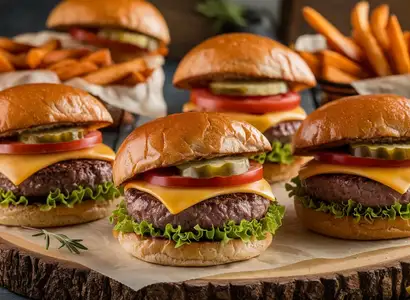
Day 7 (High-Calorie Day – Around 2000 Calories)
Breakfast:
- Breakfast Burrito with Eggs, Black Beans, Salsa, and Avocado: Wrap scrambled eggs, black beans, salsa, and avocado in a whole grain tortilla. (2 eggs, ½ cup black beans, 2 tbsp salsa, ¼ avocado, 1 whole grain tortilla)
Lunch:
- Grilled Chicken Caesar Salad with Whole Grain Croutons: Toss grilled chicken with romaine lettuce, Caesar dressing, and whole grain croutons. (4 oz grilled chicken, 2 cups romaine lettuce, 2 tbsp Caesar dressing, ¼ cup whole grain croutons)
Dinner:
- Lean Beef Burger on a Whole Grain Bun with Sweet Potato Fries: Serve a lean beef burger on a whole grain bun with a side of sweet potato fries. (6 oz lean beef patty, 1 whole grain bun, 1 small sweet potato, 1 tbsp olive oil for fries)
Snacks:
- Greek Yogurt with Granola and Honey: Serve Greek yogurt topped with granola and a drizzle of honey. (1 cup Greek yogurt, ¼ cup granola, 1 tsp honey)
- Handful of Mixed Nuts: Enjoy a handful of mixed nuts. (¼ cup mixed nuts)
Foods to Eat on a Metabolic Confusion Diet
To make the most of the metabolic confusion diet, the key is to focus on nutrient-dense whole foods while staying within your calorie guidelines for each day.
There are no strict food restrictions, but prioritizing lean proteins, vegetables, fruits, whole grains, and healthy fats is recommended.
Lean proteins:
- Skinless chicken or turkey
- Fish
- Eggs
- Tofu
Plant-based proteins:
- Beans and legumes (dried or canned)
Vegetables:
- Fresh, frozen, or canned vegetables
- Cruciferous vegetables such as broccoli, Brussels sprouts, cabbage, cauliflower, broccoli, collard greens, kale, and turnips
- Leafy greens such as kale, Bok choy, mustard greens, spinach, and arugula
Fruits:
- Apples
- Bananas
- Avocados
- Berries
Whole grains:
- Whole wheat bread
- Whole wheat pasta
- Oatmeal
- Brown rice
- Quinoa
- Farro
Nuts and seeds:
- Raw or roasted, lightly salted or unsalted
Low-fat dairy or dairy alternatives:
- Greek yogurt
- Cottage cheese
- Almond milk
Healthy fats:
- Olive oil
- Avocado oil
- Coconut oil
Other foods:
- Dark chocolate
- Buckwheat flour
- Lemon/lime juice
Foods to Avoid on a Metabolic Confusion Diet
While following the metabolic confusion diet, it’s essential to avoid certain foods that can hinder your progress:
Refined carbohydrates:
- White flour products
- Sugary snacks
- Sugar-sweetened beverages
Saturated fats:
- Red meat
- Whole-milk dairy products
- Many baked goods
Cured meats:
- Hot dogs
- Bacon
- Deli meats
Processed foods:
- Packaged items
- Fast food
Foods high in added sugars
- Candy
- Pies
- Cakes
- Cookies
- Ice cream
- Milkshakes
- Soda
- Fruit juices
- Sports drinks
- Honey mustard
Foods high in sodium
- Bacon
- Deli meats
- Sausages
- Cured meats
- Chips
- Pretzels
- Crackers
- Salted nuts
Ultra-processed foods:
- Low in fiber
- Low in nutrients
- High in unhealthy fats
- High in refined carbohydrates
Artificial trans fats:
- Shortening
- Microwave popcorn
- Stick margarine
- Frozen pizza
- Refrigerated dough products like biscuits and rolls
Benefits of the Metabolic Confusion Diet
Here are the benefits of the metabolic confusion diet, also known as calorie shifting or calorie cycling:
- Promotes Sustainable Weight Loss: By avoiding the constant low-calorie grind, this metabolism diet feels less restrictive, making it easier to stick with long-term. People often find they lose weight steadily without extreme deprivation.
- Prevents Metabolic Adaptation (Plateau): Unlike traditional diets that involve consistent calorie restriction, metabolic confusion keeps your metabolism active and prevents it from slowing down, which is a common issue in long-term diets.
- Reduces Hunger and Cravings: High-calorie days give your body a break, making it easier to control cravings and hunger. This flexibility can lead to better adherence to the plan overall.
- Improves Mental Focus: Constant dieting can feel draining. But with metabolic confusion, the calorie shifts keep you mentally refreshed and motivated, since you know a higher-calorie day is coming soon.
- Avoids Long-Term Hormonal Imbalance: Extended calorie restriction can impact hormones like leptin, ghrelin, and thyroid hormones. Calorie cycling helps keep your hunger and metabolism hormones in better balance.
- Maintains Muscle Mass: By incorporating higher calorie or protein-rich days, you’re more likely to retain lean muscle mass, especially when combined with strength training. This supports a healthy metabolism and better body composition.
- May Help Reduce Fat, Not Muscle: With proper macronutrient balance and calorie variation, this metabolism reset diet may encourage fat loss over muscle loss, helping you get leaner rather than just lighter.
- Improve Insulin Sensitivity: By cycling intake and avoiding constant carb-heavy meals, this metabolic confusion diet may help improve blood sugar control and insulin sensitivity, especially on low-calorie days.
How to Do Metabolic Confusion
- Determine Your Caloric Needs: Before starting, calculate your daily caloric needs based on your age, gender, weight, height, and activity level. This will give you a baseline for your high and low-calorie days.
- Plan Your High and Low-Calorie Days: Typically, you’ll alternate between high-calorie days (where you eat at or above your maintenance level) and low-calorie days (where you consume fewer calories). A common pattern is 3 high-calorie days followed by 4 low-calorie days.
- Focus on Whole Foods: Prioritize nutrient-rich foods like lean proteins, whole grains, fruits, vegetables, and healthy fats. These foods provide essential nutrients and keep you feeling satisfied.
- Incorporate Regular Exercise: Pair your metabolic confusion diet with a consistent exercise routine, including a mix of cardio, strength training, and flexibility exercises. Exercise boosts metabolism and helps you make the most of your diet.
How Often Should You Do a Metabolic Confusion Diet?
The frequency of metabolic confusion diets can vary depending on individual goals and preferences.
Some people might choose to follow this pattern continuously, while others might use it as a short-term strategy to break through a weight loss plateau.
A common approach is to follow the metabolic confusion diet for 2-4 weeks at a time, followed by a period of more consistent calorie intake.
This allows your body to experience the potential benefits of calorie cycling while also giving you breaks from the more structured eating pattern.
Conclusion
And there you have it, folks! A comprehensive guide to the 7-day metabolic confusion diet.
Remember, while this approach can be an exciting way to shake up your weight loss journey, it’s not a magic bullet. The most effective diet is one that you can stick to in the long run.
The metabolic confusion diet offers flexibility and variety, which many people find appealing.
The metabolism confusion diet allows you to enjoy higher-calorie days guilt-free while still working towards your weight loss goals. Plus, who doesn’t love the idea of outsmarting their own metabolism?
However, as with any diet, it’s crucial to listen to your body and consult with a healthcare professional before making significant changes to your eating habits.
They can help you determine if this approach is right for you and how to implement it safely.
- Endomorph diet plan
- Carb cycling for beginners
- Clean eating diet
- 7-day military diet meal plan
- 7-day alkaline diet plan
- 7-day candida diet meal plan
- 14-day real food diet plan
- Free low glycemic diet
- Free high-fiber diet plan
- Cheap Aldi meal plan
- Mounjaro diet plan
- Dukan diet plan phase 1
- Ozempic diet food list
- Hashimoto’s diet for thyroid health
FAQs
Does metabolic confusion work?
While research is limited, some studies suggest that metabolic confusion may help maintain a higher resting metabolic rate during weight loss compared to traditional calorie restriction.
Do bananas boost metabolism?
Yes, bananas contain fiber and resistant starch, which may indirectly support metabolic health through improved digestion and blood sugar control.
Does coffee increase metabolism?
Yes, coffee can temporarily boost metabolism. Caffeine in coffee has been shown to increase metabolic rate by 3-11% for a few hours after consumption.
However, the effect may diminish with regular consumption as the body develops tolerance.
Does metabolic confusion work for endomorphs?
Yes, metabolic confusion may be beneficial for endomorphs, who typically have slower metabolisms. The varied calorie intake could help prevent metabolic adaptation and potentially lead to more sustainable weight loss.
What to drink to boost metabolism?
Several drinks may help boost metabolism:
Green tea: Contains catechins and caffeine that can increase fat burning.
Water: Staying hydrated supports metabolic function.
Coffee: Caffeine can temporarily boost metabolic rate.
Apple cider vinegar: May increase fat burning and reduce appetite.
Lemon water: Rich in vitamin C, which supports metabolic processes.
Ginger tea: Has thermogenic properties that may slightly increase metabolism.
Kombucha: Contains probiotics that can aid digestion and metabolism.
